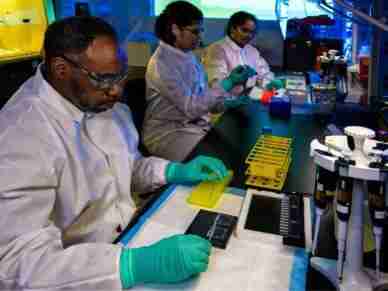How to revive charitable donations, with Charitybuzz CEO Ben Erwin
While the stock markets hit record highs and the U.S. economy outpaces its peers, charitable giving is an area of finance that has not recovered from Covid. Adjusted for inflation, giving went down in 2022 and 2023. Over the long term, fundraising has been stuck at 2% of GDP for 50 years. Charitybuzz CEO Ben Erwin attributes that to a lack of innovation.

Ben Erwin
“With technology, all the different ways we’ve removed friction, you would think as a percentage of GDP it would be going up,” he told BOSS.
But charities continue targeting the same audience year after year and in the same manner, essentially just asking for money. To really succeed, they need to broaden their horizons.
“Charities need to operate more like for-profit businesses, and they need to speak to their constituency more like investors than donors,” Erwin said. “This whole idea of, ‘I’m going to take the spare change out of my pocket or just give you some money,’ that doesn’t really inspire people to increase their contributions.”
New Avenues
By treating donors more like investors, charities can show them how the money is being spent and different benchmarks the donations are enabling the organization to hit. That will go a long way toward generating excitement and repeat donations.
While overall donations have been down, the contributions by megadonors have gone up, meaning that it’s small and midsize donations that have taken a hit. While large donations are obviously welcome, they can often come with strings attached, creating friction between donors and charities who might have different ideas on how best to allocate resources.

To increase donations and reach a wider audience, charities need to refocus their attention, Erwin said.
“Two percent of GDP goes to charity; 25% of GDP goes to what’s categorized as non-essential activities: restaurants, concerts, travel, cultural institutions. And that’s growing quite substantially, especially after the pandemic.”
If even 10% of that spending went toward charity, that would more than double annual philanthropic donations.
Organizations “need to be thinking about where there’s other dollars and ways to compel people to give,” he said.
Focus on the outcome of funneling more money to charity in whatever ways they can, and non-profits will be able to make more of a positive difference.
Give Them What They Want
What potential donors want, Erwin said, is unique experiences and inside access.
“It’s stuff that people never thought was available to purchase before,” he said. Going behind the velvet rope at awards shows and movie premiers, getting to have conversations with movie stars, athletes, musicians, politicians, these are the things that people will open their wallets for.
“Experiences are interesting because there’s no market value to them,” he said. “An experience could be worth 20 times more to you than it is to me just based on who we are and what we’re interested in. It creates this really wide and interesting marketplace.”

Interestingly, the chance to get to know business leaders is often more of a draw than celebrities. When Charitybuzz auctioned off a chance to have coffee with Apple CEO Tim Cook, it raised over $600,000 and garnered more than a billion social media impressions, far more than comparable opportunities with movie stars.
During the pandemic, when in-person events were a rarity, simply having Mark Cuban follow a donor on Instagram brought in almost $30,000. These were both lightbulb moments that demonstrated the allure of business networking for donors. In the latter case, it led to a new category on Charitybuzz that brought in nearly $1 million in donations during a time of great uncertainty.
“With the opportunity to sit down with leaders of industry, investors, advertising executives, portfolio managers, you end up having the potential to raise more than A-list celebrities because there’s real inherent value there,” he said. “Someone’s going to get something out of it. Maybe you end up making a connection. It’s facilitated networking for a cause. That’s an opportunity that more and more charitable organizations can take advantage of. Typically, those business leaders aren’t aware that their time can be leveraged as a very powerful fundraising tool.”
Solving Big Problems
Society asks a lot of charities. We ask them to solve major problems like curing cancer and ending homelessness. But we don’t give them the tools and incentives to innovate, Erwin said.
“The public-private sector partnerships need to increase in strength and scale,” he said. Spare change doesn’t solve big problems. “We have to invest in it, we have to get better incentives for people to join these organizations, we have to not worry about the percentage or margins. We need to worry about, ‘Is this organization solving the problem, yes or no?’”
With a renewed focus on impact, the money will gravitate to the organizations getting results.
“Capitalism is the most powerful force in the history of mankind. There’s ways to leverage it for good. We have ways to get better outcomes for charities and society. We don’t need to be scared to embrace it in the charity sector just because it’s not a for-profit.”
















Leave a Reply